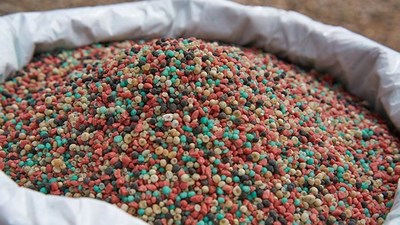CRU: China's Potash and Phosphate Industries Face an Early Mid-life Crisis
Comunicato Precedente

Comunicato Successivo

China's 'noughties' transformation…
In the early 2000s, China heavily invested in domestic fertilizer production capacity, spurred by cheap and state-backed capital. Little more than a decade later the country had transformed itself into the world's largest phosphate fertilizer producer and had also become a major potash producer. By 2019, China's phosphate fertilizer capacity had quadrupled in size compared to 2000; potassium chloride (MOP) capacity grew by more than 16 times, and phosphate rock capacity doubled over the same period.
This not only ensured self-sufficiency in phosphate fertilizer production, but it also facilitated rapid growth of the country's export capability. Prior to 2007, Chinese phosphate fertilizer exports accounted for less than 10% of the global total. This peaked at nearly 40% in 2015, and although export levels have since fallen back closer to 30%, China retains its position as the world's largest phosphate fertilizer exporter. As domestic phosphate fertilizer production surged, so did domestic phosphate rock demand. Much of the new demand was supplied by greenfield phosphate rock capacity, but it also led China to move away from the export market with rock exports shrinking from 4.9 Mt in 2001 to only 425,000 tonnes by 2019.
Unlike the nitrogen and phosphate sectors, China remains reliant on overseas imports to fulfil its annual MOP requirements. However, the rapid growth in domestic production capacity meant that Chinese MOP evolved from supplying around 15% of the country's total MOP demand in 2003, to around half by 2015.
Read the full story:
https://www.crugroup.com/knowledge-and-insights/insights/2019/china-s-potash-and-phosphate-industries-face-an-early-mid-life-crisis/

Read more about CRU: http://bit.ly/About_CRU
About CRU
CRU offers unrivalled business intelligence on the global metals, mining and fertilizer industries through market analysis, price assessments, consultancy and events.
Since our foundation by Robert Perlman in 1969, we have consistently invested in primary research and robust methodologies, and developed expert teams in key locations worldwide, including in hard-to-reach markets such as China.
CRU employs over 280 experts and has more than 11 offices around the world, in Europe, the Americas, China, Asia and Australia – our office in Beijing opened in 2004 and Singapore in 2018.
When facing critical business decisions, you can rely on our first-hand knowledge to give you a complete view of a commodity market. And you can engage with our experts directly, for the full picture and a personalised response.
CRU – big enough to deliver a high-quality service, small enough to care about all of our customers.
Photo: https://mma.prnewswire.com/media/1032924/CRU_China_potash.jpg
Logo: https://mma.prnewswire.com/media/536199/CRU_Logo.jpg





